|
The Canary Islands or the Balearic Islands?
Saturday, May 31, 2025 @ 11:22 AM
Choosing the perfect island paradise for your move is a delightful dilemma, especially when considering the sun-drenched Spanish archipelagos of the Balearics and the Canaries. Both offer an alluring escape, but their distinct characteristics cater to different lifestyles and preferences. This comprehensive guide will help you navigate their unique charms, comparing everything from their geographical makeup and climate to property prices and culinary delights, ultimately assisting you in deciding which island group is better suited to your needs.
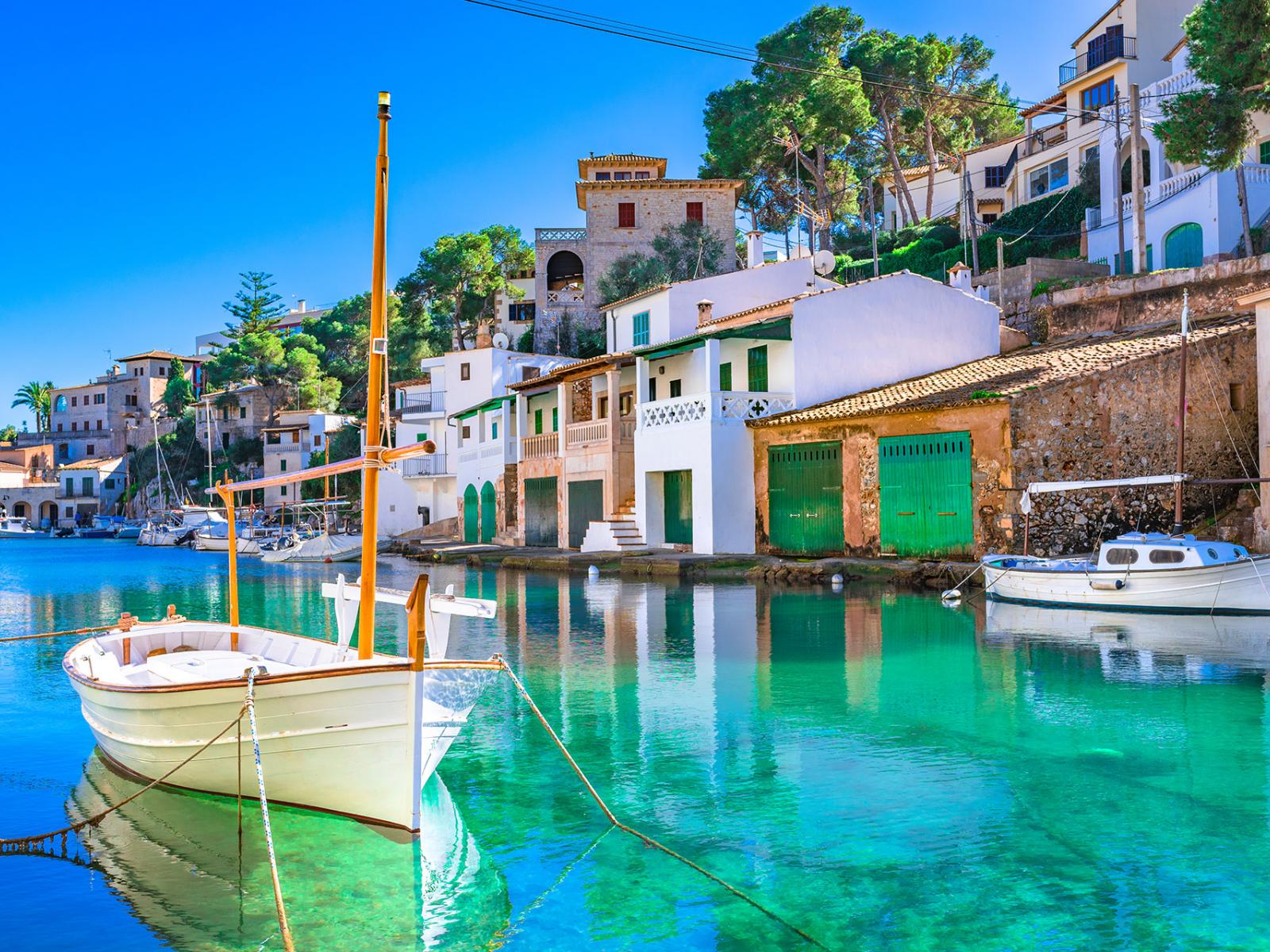
The Archipelagos Unveiled: A Geographical Overview
To understand the differences, it's crucial to first grasp the composition and location of these captivating islands.
The Balearic Islands: Located in the western Mediterranean Sea, off the eastern coast of mainland Spain, the Balearics are geographically closer to Europe and form an autonomous community of Spain. The archipelago consists of several islands, but the main ones are:
- Mallorca: The largest island, known for its stunning mountain ranges, picturesque coves, vibrant capital Palma, and diverse landscapes ranging from bustling resorts to tranquil rural areas.
- Menorca:A more laid-back and unspoiled island, famous for its pristine beaches, natural harbours, and a slower pace of life. It's a UNESCO Biosphere Reserve, emphasising its commitment to environmental preservation.
- Ibiza: Globally renowned for its electrifying nightlife, but also offers beautiful beaches, charming old towns, and surprisingly tranquil areas once you venture away from the main party hubs.
- Formentera: The smallest inhabited island, accessible only by ferry from Ibiza, it's a true gem with Caribbean-like turquoise waters and an incredibly relaxed atmosphere, perfect for a quiet escape.
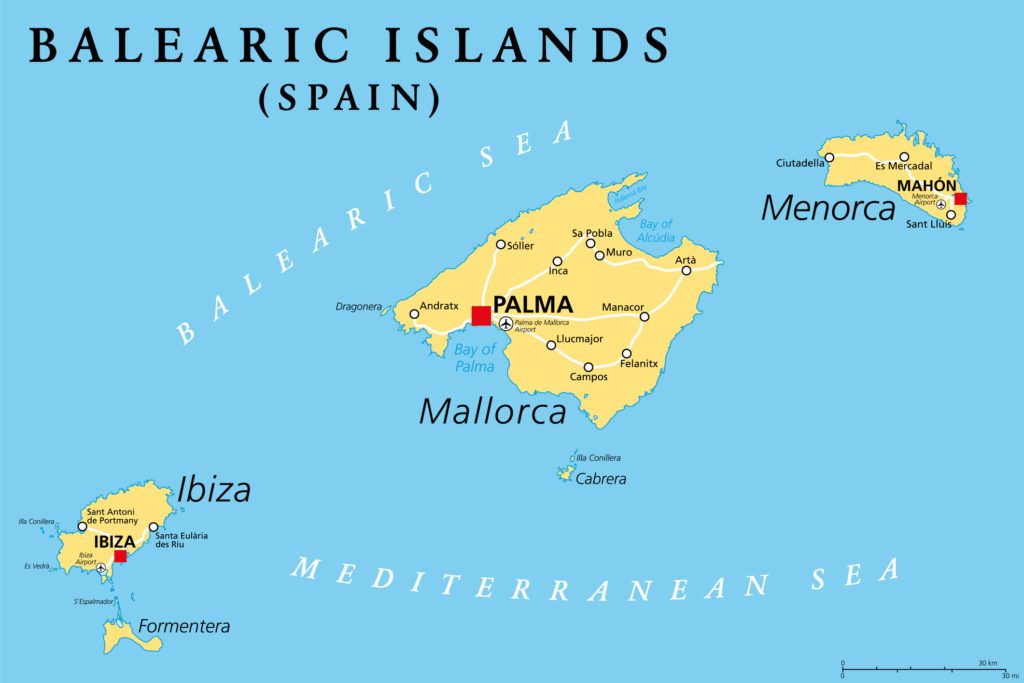
The Canary Islands: Situated in the Atlantic Ocean, off the northwest coast of Africa, the Canaries are geographically closer to Africa but politically and culturally European, also forming an autonomous community of Spain. This distance from the European mainland contributes significantly to their unique climate and natural environment. The main islands are:
- Tenerife: The largest and most populous island, dominated by Mount Teide, Spain's highest peak. It offers a diverse range of landscapes, from volcanic terrain and lush forests to bustling tourist resorts and historic towns.
- Gran Canaria: Often described as a "miniature continent" due to its varied microclimates and landscapes, ranging from the famous Maspalomas dunes in the south to the green, rugged north and the vibrant capital, Las Palmas.
- Lanzarote: Distinctive for its volcanic landscapes, particularly Timanfaya National Park. Its architecture, heavily influenced by artist César Manrique, blends seamlessly with the natural environment. It's known for its unique vineyards and black sand beaches.
- Fuerteventura: Renowned for its exceptionally long, white sandy beaches and consistent strong winds, making it a mecca for windsurfing and kitesurfing enthusiasts. It's the second-largest island and relatively sparsely populated.
- La Palma: Known as "La Isla Bonita" (The Beautiful Island) due to its lush green forests, dramatic volcanic craters, and stunning stargazing opportunities thanks to its clear skies and astronomical observatory.
- La Gomera: A circular island with deep ravines and dense laurel forests, famous for Garajonay National Park and its ancient whistling language, Silbo Gomero. It's a hiker's paradise.
- El Hierro: The smallest of the main islands, El Hierro is a UNESCO Biosphere Reserve and Geopark, celebrated for its sustainable tourism, dramatic cliffs, and rich marine life, making it a diver's dream.
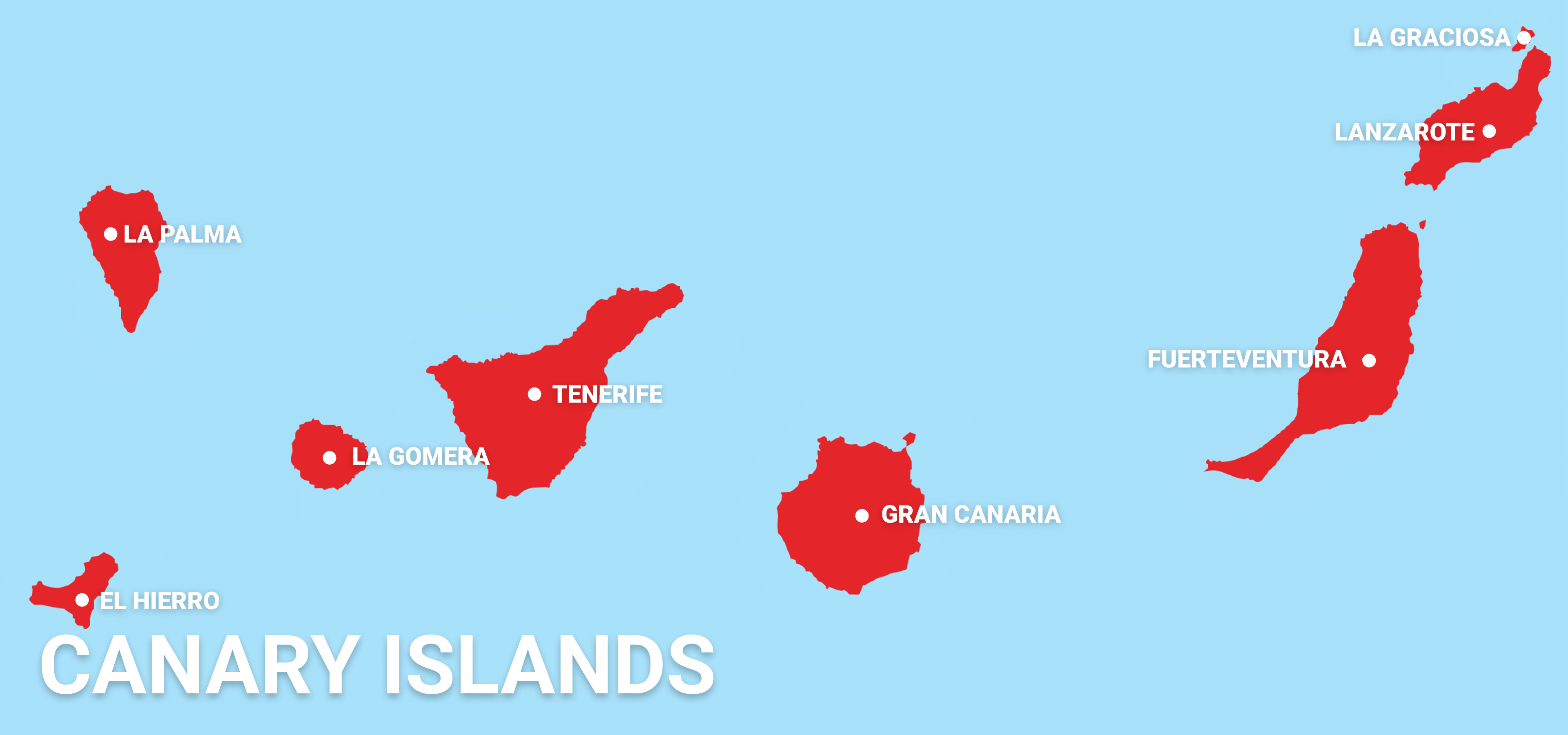
How They Are Different: The most striking difference lies in their geological formation and resulting landscapes. The Balearics are extensions of the Iberian Peninsula's mountain ranges, primarily limestone, leading to rolling hills, fertile plains, and dramatic cliff faces. The Canaries, on the other hand, are volcanic in origin, resulting in more rugged, often dramatic, and diverse terrain with black, red, and golden sands. Their geographical separation also plays a crucial role in their climates and ecosystems, as we'll explore.
Beaches: Sandy Shores and Volcanic Vistas
Both archipelagos boast incredible beaches, but their characteristics vary significantly, reflecting their geological differences.
Balearic Islands Beaches: Generally, the Balearics are famous for their white or golden sandy beaches and crystal-clear turquoise waters, reminiscent of classic Mediterranean postcards.
- Mallorca: Offers an incredibly diverse range, from long stretches of family-friendly golden sand (e.g., Alcúdia, Playa de Palma) to secluded, picturesque coves (calas) nestled between pine forests and rocky cliffs (e.g., Cala Mondragó, Sa Calobra). The water is typically calm and perfect for swimming and snorkelling.
- Menorca: Renowned for its pristine, unspoiled beaches, many of which are only accessible by foot or boat (e.g., Cala Macarella, Cala Mitjana). The sand is generally white and fine, and the waters are exceptionally clear.
- Ibiza: While known for its lively beach clubs, Ibiza also features stunning natural beaches. Cala Comte and Cala Salada offer beautiful golden sands and incredible sunsets, while the north has more tranquil coves.
- Formentera: Often hailed as having some of the best beaches in Europe, comparable to the Caribbean, with powdery white sand and astonishingly clear, shallow turquoise waters (e.g., Ses Illetes, Cala Saona).
Canary Islands Beaches: The volcanic origin of the Canaries means their beaches are more varied in colour and texture, often featuring golden, black, or reddish sands.
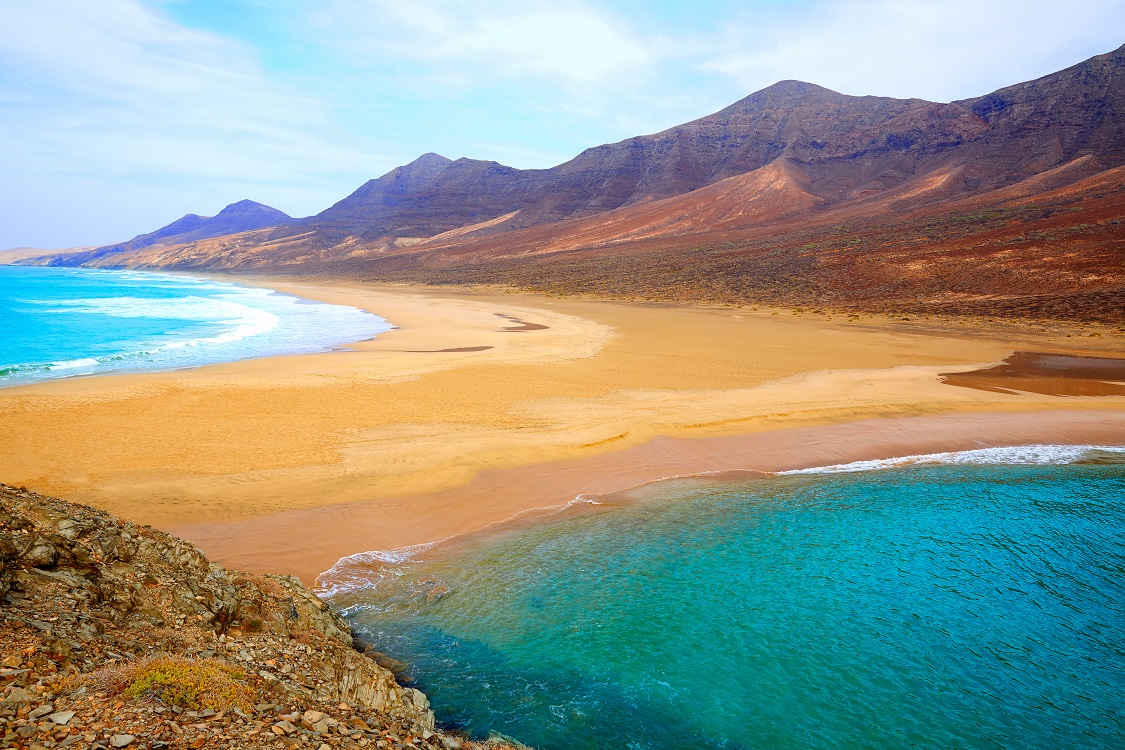
- Tenerife: Offers a mix. The south has popular golden sand beaches (some artificially imported, like Playa de las Teresitas near Santa Cruz), while the north features dramatic black sand beaches, often wilder and more exposed to Atlantic waves (e.g., El Bollullo, Benijo).
- Gran Canaria: Famous for the vast golden dunes of Maspalomas in the south, creating a desert-like landscape. Other southern beaches are golden and family-friendly (e.g., Playa del Inglés), while the north has smaller coves and some black sand beaches.
- Lanzarote: Characterised by its unique volcanic beaches. Playa Blanca and Papagayo (a series of unspoiled coves) in the south have stunning golden sand and clear waters. However, many other beaches are striking black sand (e.g., El Golfo, Playa Quemada), offering a dramatic contrast.
- Fuerteventura: The undisputed champion of long, expansive golden sandy beaches. Its coastline is blessed with miles of unspoiled, wide beaches, perfect for watersports and relaxation (e.g., Sotavento, Cofete). The sand is generally fine and light-coloured.
- La Palma, La Gomera, El Hierro: Primarily feature dramatic black sand beaches, often set against rugged cliffs, offering a wilder and more natural experience. These are less about sunbathing and more about dramatic scenery and unique swimming spots.
Similarities and Differences: Both archipelagos offer a huge variety of beaches, from bustling resort fronts to secluded coves. The main difference lies in the dominant sand colour and the surrounding landscape. The Balearics generally offer the classic Mediterranean 'white sand and blue sea' aesthetic, while the Canaries provide a more dramatic, often volcanic-influenced, palette of black, red, and golden sands, with bigger waves from the Atlantic.
Climate Contrasts: Mediterranean Sunshine vs. Perpetual Spring
The weather is often a decisive factor for those considering a holiday, and here, the Balearics and Canaries present distinctly different climates.
Balearic Islands Weather: Experience a typical Mediterranean climate characterised by hot, dry summers and mild, somewhat wetter winters.
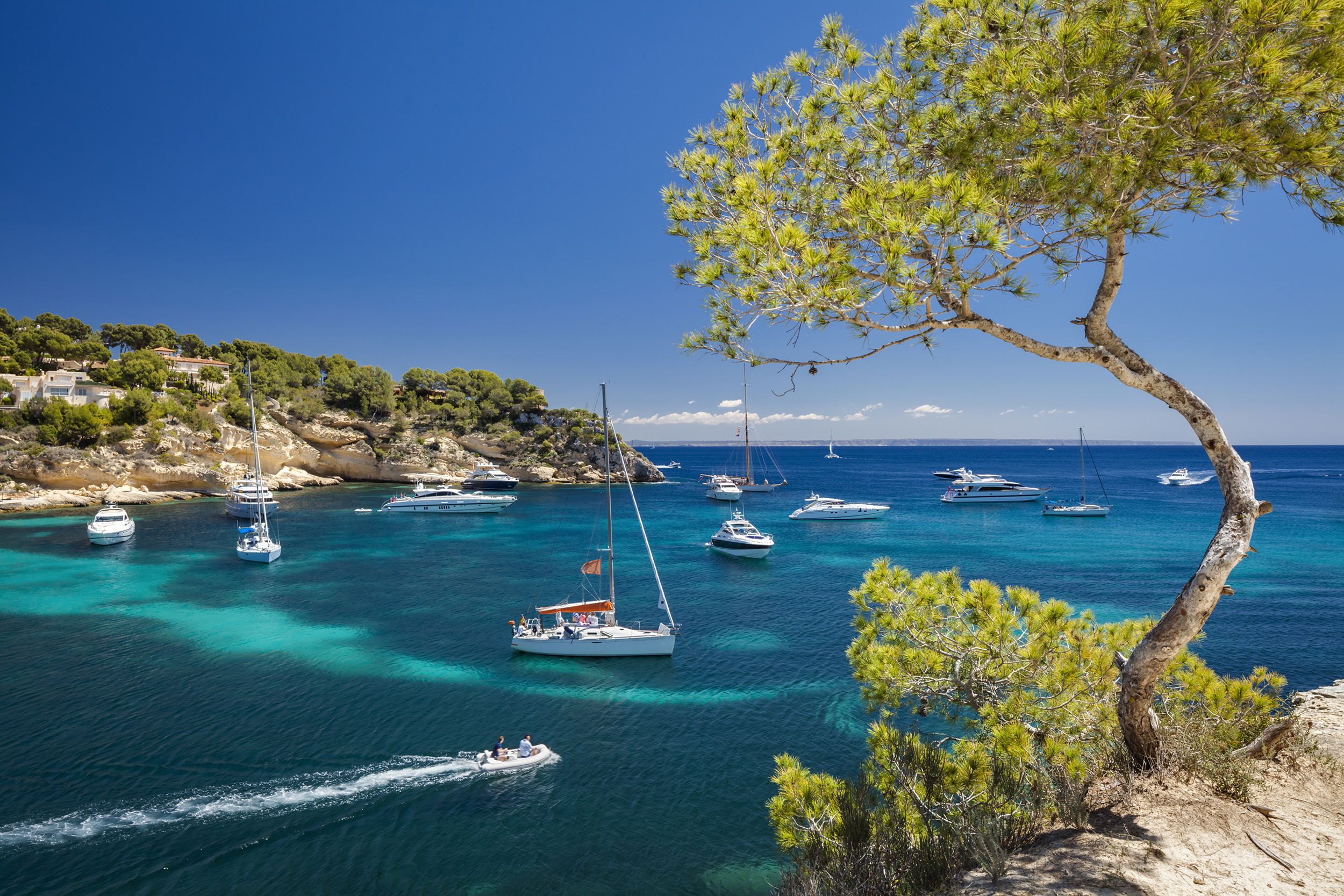
- Summers (June to August): Hot and sunny, with average daily temperatures ranging from 25∘C to 30∘C, often peaking higher. Humidity can be present, and rainfall is rare. Perfect for beach holidays and outdoor activities.
- Autumn (September to November): Temperatures gradually cool, from the low 20s∘C in September to 15∘C to 20∘C in November. There's an increased chance of rainfall, particularly in October, which can sometimes be heavy.
- Winters (December to February): Mild, with average daily temperatures around 10∘C to 15∘C. While it rarely freezes, nights can be cool. There are sunny days, but also periods of cloudiness and rain.
- Spring (March to May): Temperatures steadily rise, from around 15∘C in March to 20∘C to 25∘C in May. The islands blossom, and it's a pleasant time with less intense heat and moderate rainfall.
The Balearics experience distinct seasons, with significant temperature fluctuations throughout the year.
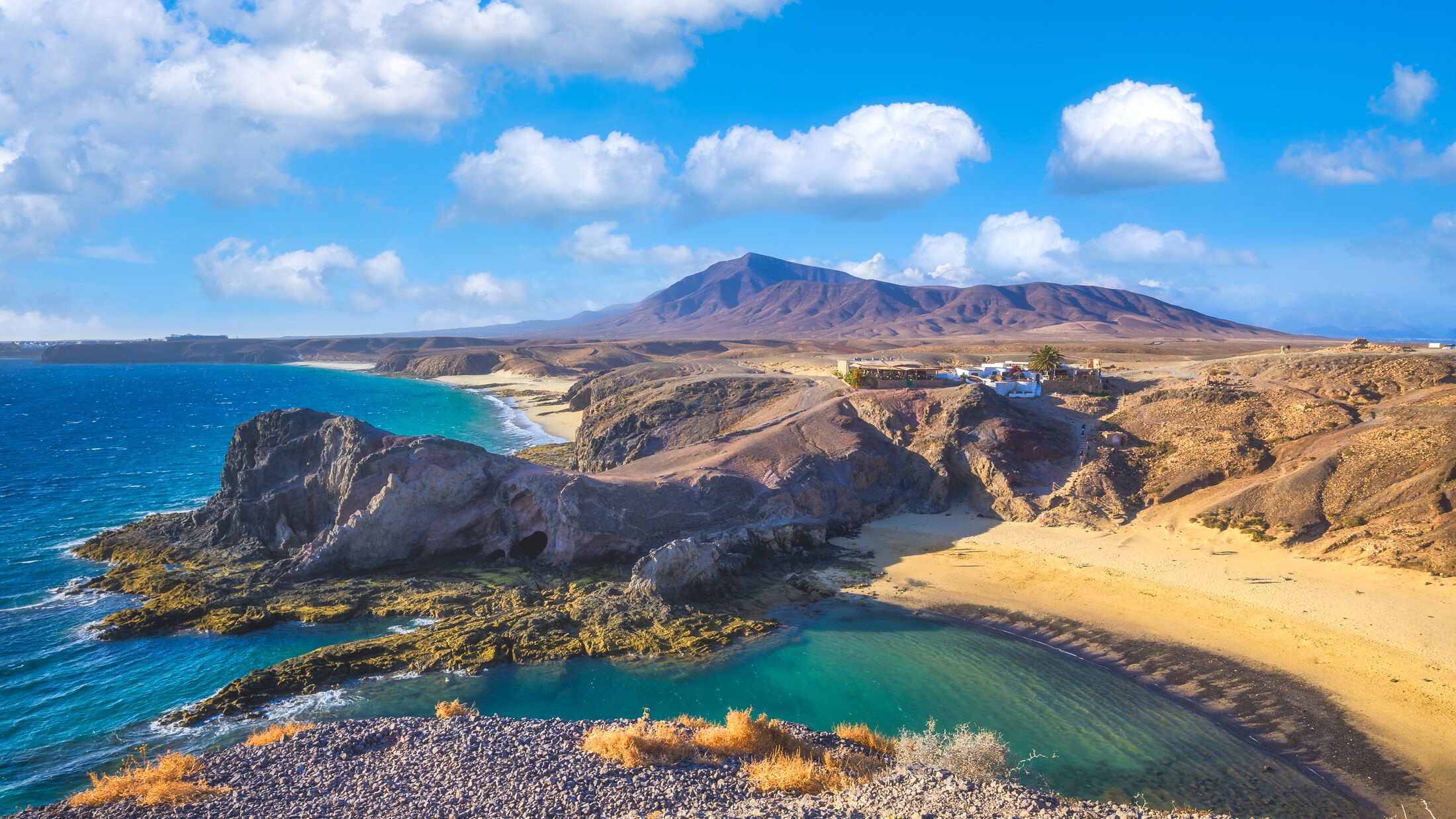
Canary Islands Weather: Famous for their "eternal spring" climate, meaning stable, pleasant temperatures year-round with less seasonal variation than the Balearics. This is due to their proximity to the African coast and the influence of the Azores High and trade winds.
- Temperatures: Average daily temperatures generally hover between 20∘C and 25∘C throughout the year, with very little deviation between summer and winter. The south of the islands (e.g., south Tenerife, south Gran Canaria, Fuerteventura, Lanzarote) tends to be slightly warmer and sunnier due to shielding from the trade winds by mountainous terrain.
- Rainfall: Generally very low, especially in the southern parts of the islands. When it does rain, it's typically short-lived and more frequent in the northern, greener areas and during the winter months.
- Sunshine: Abundant year-round.
- Winds: The trade winds are a constant feature, especially in Fuerteventura, making it ideal for wind sports but also providing a refreshing breeze that mitigates the heat.
Differences: The most significant difference is the lack of extreme seasonal variation in the Canaries. If you crave consistent warmth and sunshine every day of the year, the Canaries are a clear winner. The Balearics offer a more traditional four-season experience, with hot summers and cooler, wetter winters, making them perhaps more appealing to those who appreciate seasonal changes and don't mind cooler periods. For year-round outdoor living and activities, the Canaries' climate is often preferred.
Property Prices
For those considering a longer stay or investing in a holiday home, property is a major consideration. Generally speaking, the Balearics tend to be more expensive, particularly for prime locations and luxury properties.
Balearic Islands Property Market: The Balearics are considered a premium property market within Spain, often commanding higher prices due to their established tourism and desirability.
- Mallorca: Palma and its surrounding areas, as well as the southwest coast (e.g., Port Andratx, Santa Ponsa), are among the most expensive areas in Spain. Rural properties in the centre and north can also be pricey.
- Ibiza: Commands some of the highest property prices in Spain, particularly for villas and luxury homes. The island's global reputation drives prices upwards.
- Menorca: Generally more affordable than Majorca and Ibiza, but still considered a high-value market.
- Formentera: Due to its small size and strict building regulations, property is extremely rare and exceptionally expensive.
Canary Islands Property Market: While certainly not 'cheap', the Canary Islands generally offer more accessible property prices compared to the Balearics, especially when considering the excellent year-round climate.
- Tenerife: The most active market in the Canaries. The south (e.g., Costa Adeje, Los Cristianos) is popular with tourists, and prices here are higher, particularly for apartments and villas with sea views. The north tends to be more affordable.
- Gran Canaria: Similar to Tenerife, the south (e.g., Maspalomas, Mogán) is more expensive due to tourism, while the capital, Las Palmas, offers a range of urban apartments.
- Lanzarote: Property prices have seen steady growth but remain generally lower than in the prime areas of Tenerife and Gran Canaria. Puerto del Carmen, Playa Blanca, and Costa Teguise are popular coastal areas.
- Fuerteventura: Often considered one of the more affordable islands in the Canaries, particularly inland or in smaller coastal towns.
- La Palma, La Gomera, El Hierro: These smaller, greener islands generally have the most affordable property prices in the Canaries, appealing to those seeking a quieter, more authentic island life away from mass tourism.
Differences: The Balearics, particularly Majorca and Ibiza, operate at a significantly higher price point, attracting a more affluent buyer base. The Canaries offer a wider range of prices, making property ownership more attainable for a broader spectrum of budgets, especially in the less touristy areas or on the smaller islands. If budget is a primary concern for a holiday home or a longer stay, the Canaries generally offer more for your money.
Cost of Living: Everyday Expenses Compared
Beyond property, the cost of daily life is a crucial factor for tourists, especially for longer stays. While both archipelagos are part of Spain, and therefore benefit from EU pricing on many goods, subtle differences can impact your holiday budget.
Balearic Islands Cost of Living: Generally higher than mainland Spain and, in many aspects, higher than the Canary Islands. This is due to several factors:
- Tourism Impact: High demand from tourism drives up prices for many goods and services, especially in peak season.
- Island Logistics: Goods often need to be imported, incurring higher transport costs.
- Groceries: Supermarket prices can be slightly elevated compared to the mainland. Local markets might offer better value for fresh produce.
- Dining Out/Entertainment: Expect higher prices in restaurants, bars, and for activities, particularly in tourist hotspots.
Canary Islands Cost of Living: Generally lower than the Balearic Islands, and in some aspects, even lower than mainland Spain. This is largely due to their unique tax regime.
- Canary Islands Special Zone (ZEC): The Canaries benefit from a special economic and fiscal regime (REF) that includes lower VAT (IGIC - Impuesto General Indirecto Canario) at a general rate of 7% compared to Spain's 21% VAT. This directly impacts the price of many goods and services.
- Groceries: Often more affordable than the Balearics due to the lower IGIC. Local produce can be very reasonably priced.
- Dining Out/Entertainment: Generally more affordable than the Balearics, especially in non-touristy areas.
- Fuel: Significantly cheaper than mainland Spain and the Balearics due to the lower tax on hydrocarbons. This is a noticeable saving for car rental.
Differences: The most significant factor in the difference in cost of living is the tax regime (IGIC vs. VAT), which makes most consumer goods, services, and fuel cheaper in the Canaries. While both are Spanish islands, the Canaries generally offer a more economical holiday or living experience, particularly for everyday expenses and fuel.
Travel Times from Main European Cities
The duration of travel is a key consideration for tourists, especially those planning short breaks or with limited travel time.
Balearic Islands Travel Times: Due to their Mediterranean location, the Balearics are relatively quick and easy to reach from most major European cities.
- Flight Durations (from London, as an example):
- Mallorca (Palma de Mallorca Airport - PMI): Approximately 2 hours 15 minutes to 2 hours 30 minutes.
- Ibiza (Ibiza Airport - IBZ): Approximately 2 hours 15 minutes to 2 hours 30 minutes.
- Menorca (Mahon Airport - MAH): Approximately 2 hours 15 minutes to 2 hours 30 minutes.
- Frequency: High frequency of direct flights, especially during the summer season, from numerous European cities. Even in winter, there are good connections.
- Accessibility: Their proximity to mainland Spain also means easy ferry connections from Barcelona, Valencia, and Denia, offering an alternative travel option for those who prefer not to fly or wish to bring a car.
Canary Islands Travel Times: Being further out in the Atlantic, the Canary Islands require longer flight durations from mainland Europe.
- Flight Durations (from London, as an example):
- Tenerife (Tenerife South Airport - TFS; Tenerife North Airport - TFN): Approximately 4 hours to 4 hours 30 minutes.
- Gran Canaria (Gran Canaria Airport - LPA): Approximately 4 hours to 4 hours 30 minutes.
- Lanzarote (Lanzarote Airport - ACE): Approximately 4 hours to 4 hours 15 minutes.
- Fuerteventura (Fuerteventura Airport - FUE): Approximately 4 hours 15 minutes to 4 hours 30 minutes.
- La Palma (La Palma Airport - SPC): Approximately 4 hours 30 minutes to 5 hours (often requiring a connection in Tenerife or Gran Canaria for direct flights from smaller European cities).
- La Gomera (La Gomera Airport - GMZ) & El Hierro (El Hierro Airport - VDE): Require an internal flight connection from Tenerife North, adding significant travel time.
- Frequency: While popular, the frequency of direct flights from European cities might be slightly less in the quieter months compared to the Balearics, though major islands still have good connections.
- Accessibility: No direct ferry connections from mainland Europe; all travel is by air or via cruise. Internal island hopping is common via ferry or inter-island flights for tourists wishing to explore multiple islands.
Differences: The Balearics are significantly closer to main European cities, meaning shorter flight times (around half) and often more frequent and potentially cheaper flights, especially for short breaks. If quick, easy access from Europe is a high priority, the Balearics offer a distinct advantage. The Canaries, while very accessible by air, require a longer commitment for travel, making them more suitable for longer holidays.
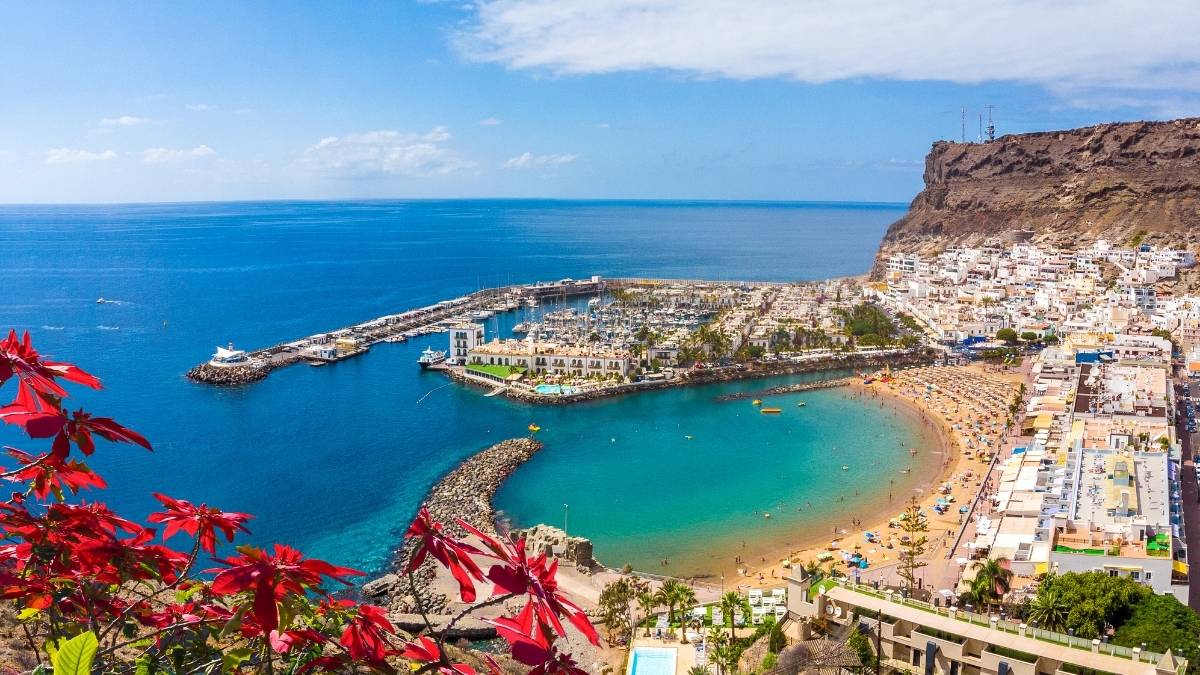
Culinary Delights: A Taste of the Islands
Food is an integral part of any holiday experience, and both archipelagos offer distinct culinary adventures, influenced by their geographical location and historical ties.
Balearic Islands Food: Rooted in classic Mediterranean cuisine, with strong Catalan influences and an emphasis on fresh seafood, pork, and local produce.
- Sopas Mallorquinas: A hearty dish of thinly sliced bread, vegetables (cabbage, cauliflower, beans), and often meat, simmered in a rich broth.
- Frito Mallorquín: A traditional Majorcan dish made with fried lamb or pork (or sometimes seafood), potatoes, peppers, onions, and often offal.
- Arroz Brut: Literally "dirty rice," a soupy rice dish with meat (pork, rabbit, chicken), vegetables, and saffron.
- Sobrasada: A raw, cured sausage from Majorca, made from ground pork, paprika, salt, and other spices, often spread on bread.
- Ensaimada: A coiled pastry, iconic of Majorca, dusted with icing sugar. It comes in various sizes and can be filled with cream, chocolate, or pumpkin jam.
- Seafood: Abundant and fresh, including grilled fish, paella, and various seafood stews.
- Wine: Local wines are gaining recognition, particularly from Majorca.
- Olives & Olive Oil: Excellent quality, reflecting the Mediterranean climate.
Canary Islands Food: Characterised by simpler, more rustic flavours, with influences from Latin America and North Africa, alongside traditional Spanish elements. Fresh fish and local produce are key.
- Papas Arrugadas con Mojo: "Wrinkled potatoes" boiled in salty water until tender, served with two traditional sauces: Mojo Rojo (red, spicy, made with paprika, garlic, and chilli) and Mojo Verde (green, made with coriander or parsley, garlic, and olive oil). This is arguably the most iconic Canarian dish.
- Gofio: A versatile flour made from roasted grains (wheat, barley, corn). It's a staple and used in various ways: as a thickener for stews, mixed with milk for breakfast, or kneaded into a dough-like consistency.
- Fresh Fish & Seafood: Given the islands' Atlantic location, fresh fish is paramount. Common dishes include Pescado a la Sal (salt-baked fish), grilled sardines, and various seafood stews.
- Sancocho Canario: A salted fish stew, typically with dried fish (often cod), potatoes, sweet potatoes, and served with mojo.
- Bienmesabe: A sweet, paste-like dessert made from almonds, honey, egg yolks, and lemon zest.
- Canarian Cheeses: Excellent goat and sheep cheeses, particularly from Fuerteventura and La Palma, with distinct flavours.
- Tropical Fruits: Due to the climate, a wider variety of tropical fruits are grown, including bananas (Plátano de Canarias), papayas, mangoes, and avocados.
- Canarian Wines: Distinctive wines, particularly from Lanzarote (from vines grown in volcanic ash) and La Palma.
Differences: The Balearic cuisine leans more towards a classic Mediterranean diet with richer, often pork-based dishes, and a strong emphasis on olive oil and cured meats. The Canarian diet is simpler, with a focus on fresh fish, potatoes, and the ubiquitous mojo sauces. The use of gofio and a wider array of tropical fruits are also defining characteristics of Canarian food, reflecting its unique climate and historical connections. If you prefer rich, traditional Spanish/Mediterranean flavours, the Balearics might appeal more. If you enjoy fresh, lighter, and more unique island flavours with a hint of spicy zest, the Canaries will be a culinary adventure.
Are the Balearic or Canary Islands Better?
There is no single "better" island group; the choice hinges entirely on your personal preferences...
Choose the Balearic Islands if:
- You prefer a classic Mediterranean climate: Hot, dry summers and cooler, distinct winters, perfect for summer beach holidays.
- You value shorter flight times from mainland Europe: Ideal for weekend breaks or shorter holidays.
- You are looking for a more established European holiday feel: With vibrant resorts, historical towns, and diverse entertainment options.
- You appreciate a more refined, upscale environment: Particularly in Majorca and Ibiza, which offer luxury resorts and fine dining.
- You enjoy the Mediterranean culinary style: With its emphasis on fresh seafood, cured meats, and traditional Spanish dishes.
- You love white/golden sand beaches and calm, turquoise waters.
Choose the Canary Islands if:
- You crave year-round sunshine and a stable, mild climate: The "eternal spring" is perfect for winter sun holidays or consistent pleasant weather.
- You are seeking a more affordable holiday: Thanks to the lower IGIC tax impacting the cost of goods and services.
- You appreciate a more diverse, dramatic, and volcanic landscape: With black, red, and golden sand beaches, and unique natural wonders like volcanoes and lava fields.
- You enjoy outdoor activities year-round: Hiking, watersports (especially windsurfing and kitesurfing), and exploring unique natural parks are more comfortable in the consistent climate.
- You prefer a mix of European and more unique island influences in your cuisine: With fresh fish, mojo sauces, and tropical fruits.
- You don't mind longer flight times from mainland Europe, as the consistent warm weather often justifies the extra travel.
- You appreciate the unique and distinct character of each island, offering a vast array of experiences within one archipelago, ideal for island hopping.
Final Thoughts:
Both the Balearic and Canary Islands offer an exceptional holiday experience, stunning natural beauty, and a welcoming culture. Your decision will ultimately come down to the nuances: do you prefer the quintessential Mediterranean charm, or the unique, perpetual spring of the Atlantic? Do you prioritise quick European accessibility, or do you value a more affordable holiday and dramatic landscapes? Consider visiting both, if possible, to truly experience their distinct atmospheres.
3 Comments
Only registered users can comment on this blog post. Please Sign In or Register now.
|
|